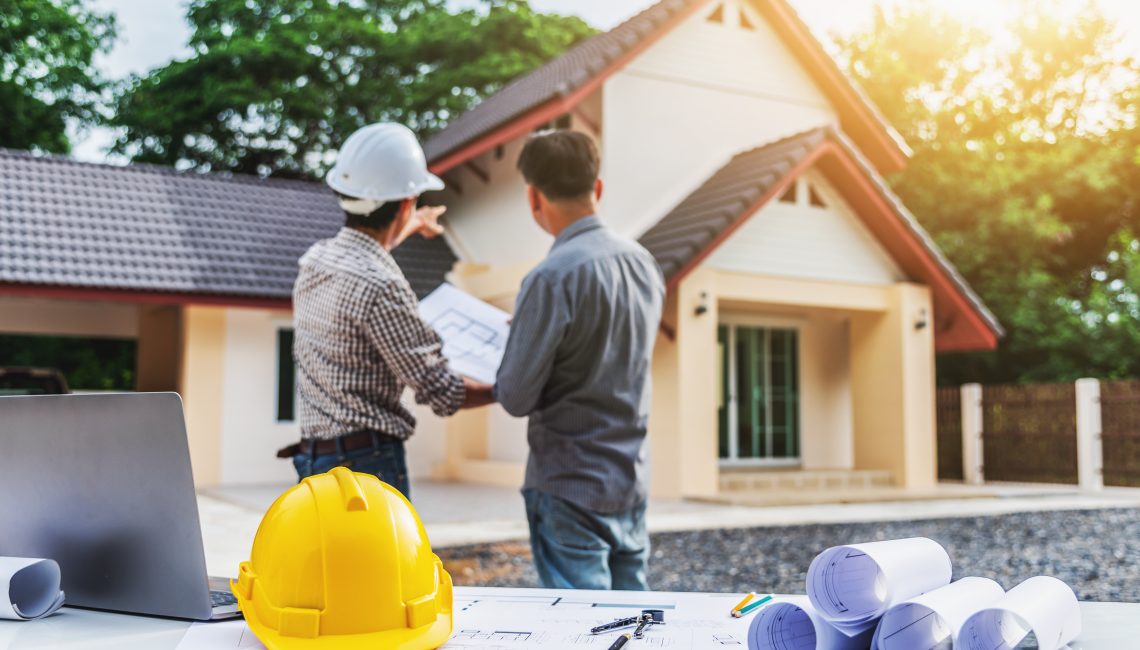Working in the construction sector involves countless safety concerns, especially when you’re on a job site during the summer months when outdoor temperatures call for prolonged, and extreme heat waves.
Whether you’re working with skilled tradespeople or new employees, protecting construction workers under your care and on your job site is essential, as unsafe conditions can put your business operations and interests in jeopardy.
If you’re the owner of a construction business or contracting company, take note of these safety tips and practices to ensure you’re able to prevent heat stroke amongst your workforce and uphold occupational safety standards on your construction site.
Why is working in the heat on a construction site risky?
Construction jobs are already physically exhausting and risky. This risk is heightened when workers are made to work in scorching temperatures for long periods of time, given that heat can accelerate and worsen this exhaustion.
This is why it’s crucial that construction and contracting companies actively protect their workers from heat-related illnesses during the summertime as it can significantly threaten all members of your team. However, with the right safety tips and practices, you can protect your team and prevent heat-related hazards on site this summer.
The early signs of heat related illnesses
Prolonged heat exposure can cause significant health hazards, especially to new workers. Without the proper precautions and safety training, heat related illnesses can go undiagnosed until it’s too late.
To ensure you’re protecting workers and avoiding project delays, take a closer look at some of these early symptoms of heat illness:
1. Heat cramps
These types of muscle spasms are usually experienced in the legs, arms, or stomach area.
2. Heat exhaustion
Beyond cramps, another type of heat illness that’s common is heat illness (exhaustion). Here are some signs to look out for:
Increased sweating
Construction workers may experience increased sweating, accompanied by clamminess and feeling cold at the same time.
Weakness throughout the body
The individual may also feel weak or unusually tired following long periods of high temperatures.
Feeling dizzy or disoriented
They could feel dizzy as well as disoriented.
Nausea or vomiting
Having an upset stomach, feeling nauseous, or vomiting can also happen when the body is overheating.
Pale-looking skin
The skin can appear pale and clammy.
Increased pulse
A fast, yet weak heartbeat is another response to heat stress throughout the body.
Headache
Heat can also cause workers to have headaches.
2. Dehydration
Symptoms of being dehydrated include dry mouth, excessive thirst, increased urination, and lightheadedness.
Heat rash
A heat rash is another type of heat illness that can blister the skin.
What sunscreen do construction workers use?
UV protection is incredibly important during the summer months when there’s an increased chance of being exposed to high temperatures and direct sunlight for long periods of time.
Without UV protection and the right protective gear, your workforce is at risk of severe sunburns that could eventually turn into cancer later down the line. To protect workers in hot environment settings, make sure any exposed skin has at least 30 SPF sunscreen on it, specifically the face, neck, arms, hands, and lips.
You’ll also want to make sure that the sunscreen is waterproof, to ensure it remains intact, should your construction workers begin to sweat.
How do you beat construction heat?
To beat and prevent heat-related illnesses on your construction sites, it’s important that you familiarize yourself with these safety tips and safety practices:
- Drink water frequently: Make sure all workers on your construction site have unlimited access to cool water throughout the day. You should encourage them to drink water every half an hour or so, not only when they feel thirsty. This will help prevent the risk of dehydration.
- Wear breathable clothing: Tell your workers to wear loose-fitting, breathable materials. Light colors work best as they do not absorb as much as black clothing materials.
- Take regular breaks: Make sure your workers are allowed regular breaks throughout the day in an area where they can cool down, preferably one that has air conditioning, if it’s accessible. Otherwise, a shaded area with working fans is suggested.
- Wear sunscreen: Have workers apply SPF 30 to all areas of their skin that is not covered by the appropriate protective gear.
- Don’t forget your sunglasses: Safety glasses and sunglasses are also needed as UV rays can affect your eyes and lead to damage over time without the proper protection.
- Set up a shaded area on your construction site: Like we mentioned above, ensure that your job site has a shaded area where construction workers are able to cool off during their breaks.
- Train your employees: Lastly, don’t forget to educate all of your trained workers about the risks of prolonged exposure to heat and hot temperatures. Safety practices should include how to respond to emergency health scenarios and how to identify signs in other employees.
Remember, training workers and ensuring they actively understand and implement safety practices on construction sites helps keep everyone at the job site safe when using heavy equipment, complex tools, construction materials in direct sunlight for hours on end.
How can you be safe on a construction site?
The construction industry as a whole, including individual construction sites, involves many different risks. To guarantee safety and protect your workers on the job, here’s what you should be doing:
Ensure all employees where appropriate personal protective equipment (PPE)
All individuals on the job site should be wearing personal protective equipment at all times. This could include hard hats, safety glasses, gloves, reflective vests, steel toe shoes, and other safety gear that is unique to the type of job at hand.
Safety training is a must for all of your workforce
All workers you hire for the job should receive thorough training on any related safety protocols, proper use of equipment, and emergency procedures should anything go wrong. It’s also important that you uphold your commitment to ongoing training for your workers.
Have the right signs posted on your site
Always make sure that you have signs posted around your construction site that suggest any hazards and of course, related safety instructions.
Keep your job site as clean and organized as possible
Ensure your job sites are free of any hazards that could lead to injuries like tripping over objects, heights, electrical wires, and more. Tools and equipment should be stored correctly,
Use tools and machines with care
Only trained workers should operate machines on your job sites. For the protection of your team, you should also keep equipment and machines well-maintained to ensure they work correctly.
Maintain open communication lines with your team
Give your team communication tools that allow them to get in contact with anyone on site at any time, without any delays. This can be especially important during emergencies where time is of the essence.
Be cautious of heights
If your team is working at elevated heights, you need to make sure that you have secured scaffolding in case of high winds, fall gear, and other protection equipment to maintain the safety of your team at all times
Prepare for emergency scenarios
Implement an emergency plan amongst your team that everyone knows and understands thoroughly. You should review this emergency plan on a regular basis to avoid miscommunications amongst workers.
What measures do you take to prioritize safety on construction sites?
To ensure construction sites are safe, businesses need to prioritize safety and construction practices at all times. Safety measures could include:
- Clear safety expectations: Create detailed and documented safety policies that deal with all aspects of your work. Make sure workers have access to these policies and that you strictly enforce safety measures at all times.
- Conduct safety inspections: Check the job site and any machinery on a regular basis to find and fix any possible safety issues. These inspections should be done by site managers and consequences should be made clear if workers are blatantly ignoring safety protocols.
- Have a safety reporting system: A primary cause of safety hazards is unsafe working environments that go unnoticed. So, make sure you have a system in place that allows your workers to report unsafe scenarios and conditions on your job site. Remember, the protection of your workers is key, and they should be able to report any hazards easily, at any time.
Furthermore, if you’re unsure about how you can maintain a safe construction site, look to your provinces health act for further safety tips related to the unique needs and hazards of the construction industries, projects, and work environments for further information.
Work in the construction industry or as a contractor? Get customized insurance protection from Oracle RMS
The potential hazards associated with construction work is all the more reasons to make sure you have the right contractors and construction insurance.
Oracle RMS is a leading brokerage with over 40 years of industry experience. Our team of experienced brokers work with some of Canada’s top insurance carrier companies, enabling them to customize your policies depending on your unique needs as a business.
Don’t delay insuring your construction company and your job site, get a free online contractors and construction insurance quote with Oracle RMS, today!





